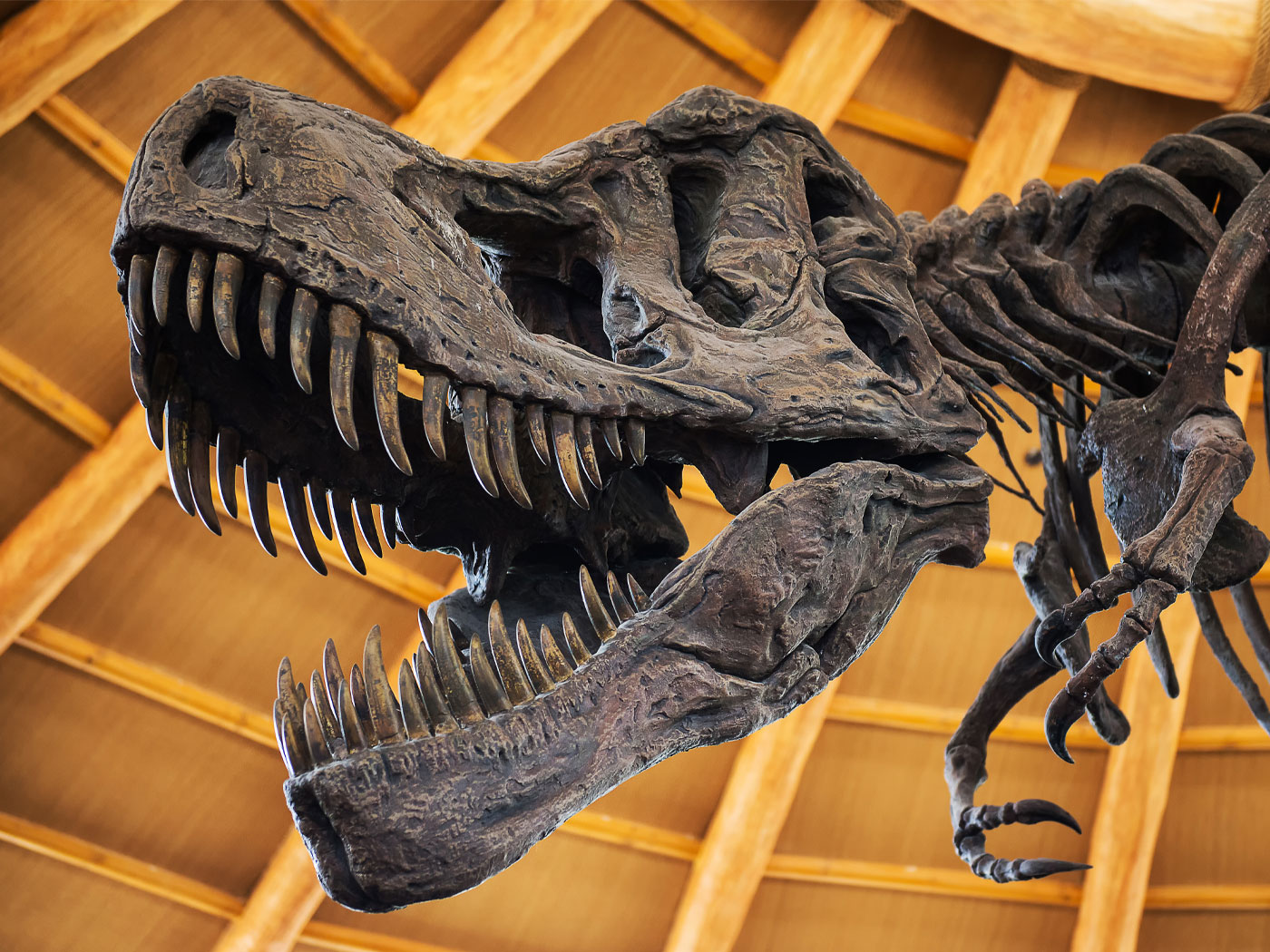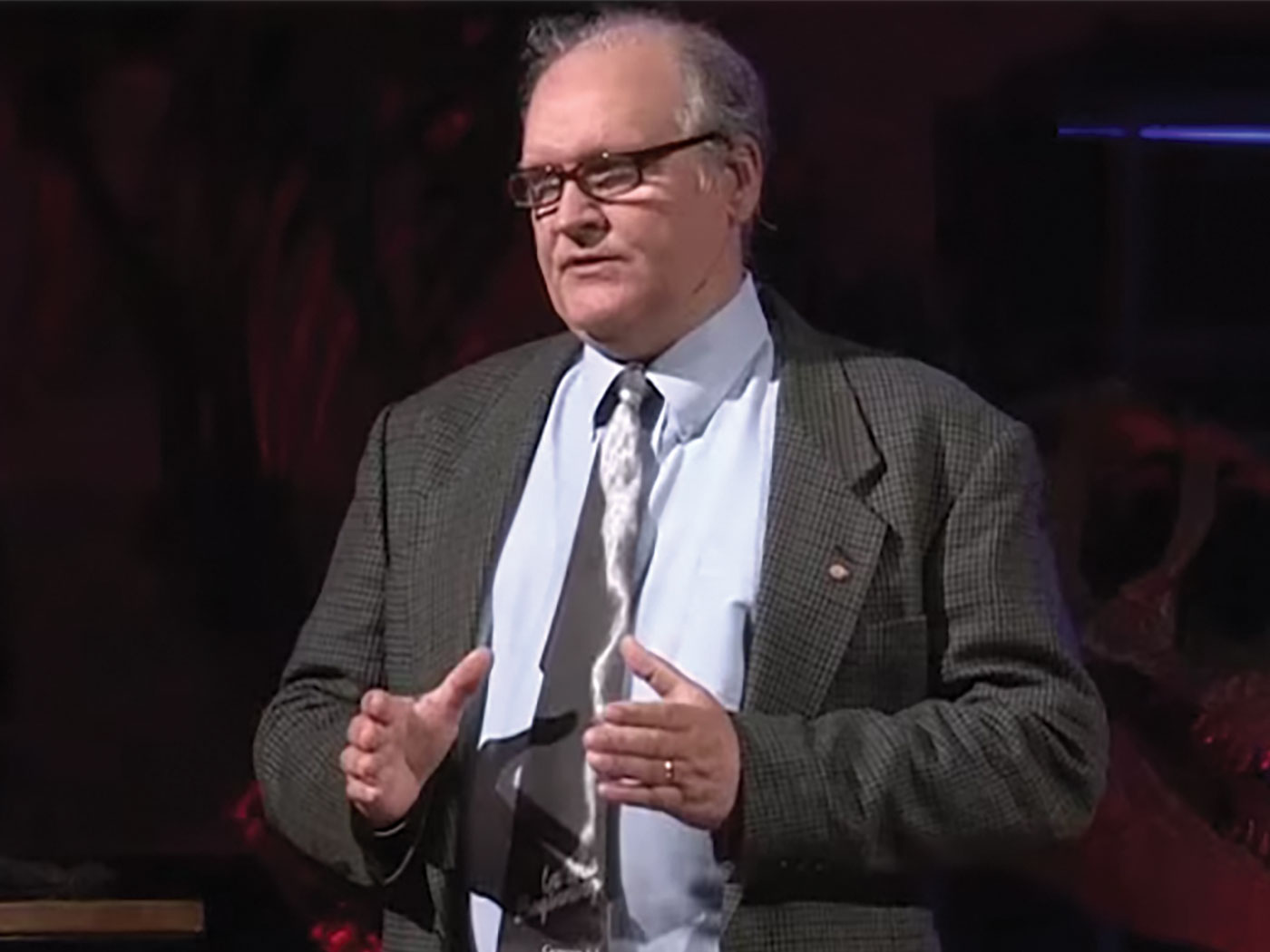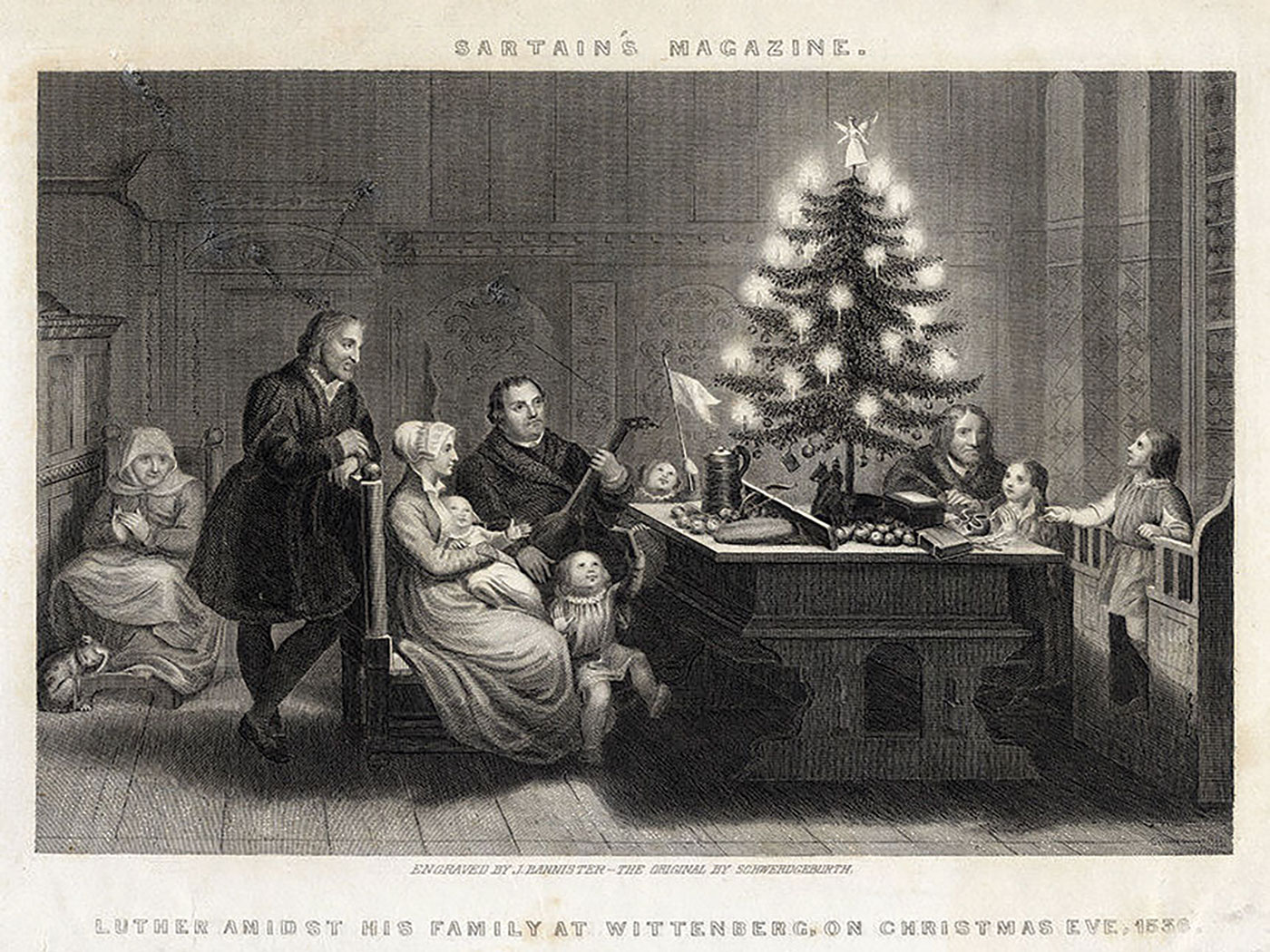The racism of evolution theory has been documented well and widely publicized. It is known less widely that many evolutionists, including Charles Darwin, also taught that women are biologically inferior to men. Darwin's ideas, including his view of women, have had a major impact on society. In a telling indication of his attitude about women (just before he married his cousin, Emma Wedgewood), Darwin listed the advantages of marrying, which included: ". . . constant companion, (friend in old age) who will feel interested in one, object to be beloved and played with—better than a dog anyhow—Home, and someone to take care of house . . ." (Darwin, 1958:232,233).
Darwin reasoned that as a married man he would be a "poor slave, . . . worse than a Negro," but then reminisces that, "one cannot live the solitary life, with groggy old age, friendless ... and childless staring in one's face...." Darwin concludes his discussion on the philosophical note, "there is many a happy slave" and shortly thereafter, married (1958:234).
Darwin concluded that adult females of most species resembled the young of both sexes and from this and the other evidence, "reasoned that males are more evolutionarily advanced than females" (Kevles, 1986:8). Many anthropologists contemporary to Darwin concluded that "women's brains were analogous to those of animals," which had "overdeveloped" sense organs "to the detriment of the brain" (Fee, 1979:418). Carl Vogt, a University of Geneva natural history professor who accepted many of "the conclusions of England's great modern naturalist, Charles Darwin," argued that "the child, the female, and the senile white" all had the intellect and nature of the "grown up Negro" (1863:192). Many of Darwin's followers accepted this reasoning, including George Romanes, who concluded that evolution caused females to become, as Kevles postulated:
. . . increasingly less cerebral and more emotional. Romanes . . . shared Darwin's view that females were less highly evolved than males—ideas which he articulated in several books and many articles that influenced a generation of biologists. Romanes apparently saw himself as the guardian of evolution, vested with a responsibility to keep it on the right path. . . . University of Pennsylvania . . . paleontologist Edward Drinker Cope wrote that male animals play a "more active pan in the struggle for existence," and that all females, as mothers, have had to sacrifice growth for emotional strength . . . (Kevles, 1986:8,9).
One reason nineteenth century biologists argued for women's inferiority was because Darwin believed that "unchecked female militancy threatened to produce a perturbance of the races" and to "divert the orderly process of evolution" (Fee, 1979:415).
Darwin taught that human sex differences were due partly to sexual selection, specifically because men must prove themselves physically and intellectually superior to other men in the competition for women, whereas women must be superior primarily in sexual attraction. Darwin used examples of cultures that require the men to fight competitors to retain their wives to support this conclusion. Because "the strongest party always carries off the prize," the result is that "a weak man, unless he be a good hunter . . . is seldom permitted to keep a wife that a stronger man thinks worth his notice" (1896:562).
Other examples Darwin uses to illustrate his conclusion that evolutionary forces caused men to be superior to women included animal comparisons. Since humans evolved from animals, and "no one disputes that the bull differs in disposition from the cow, the wild-boar from the sow, the stallion from the mare, and, as is well known through the keepers of menageries, the males of the larger apes from the females," the same must be true with human females (Darwin, 1896:563). Further, some of the traits of women "are characteristic of the lower races, and anti therefore of a past and lower state of civilization" (1896:563,564). In summary, Darwin concludes that men attain,
. . . a higher eminence, in whatever he takes up, than can women—whether requiring deep thought, reason, or imagination, or merely the use of the senses and hands. If two lists were made of the most eminent men and women in poetry, painting, sculpture, music (inclusive of both composition and performance), history, science, and philosophy, with half-a-dozen names under each subject, the two lists would not bear comparison. We may also infer, from the law of the deviation from averages, so well illustrated by Mr. Galton, in his work on "Hereditary Genius" that . . . the average of mental power in man must be above that of women (Darwin, 1896:564).
Obviously, Darwin totally ignored the influence of culture, the environment, social roles, and the relatively few opportunities that existed in his day, as well as historically, for both men and women.
The conclusion that women are evolutionarily inferior to men is at the core of Darwin's major contribution to evolutionary theory: natural anti-sexual selection. Since selection in the long term prunes out the weak, all factors which facilitate saving the weak work against evolution. Males are subjected to more selection pressures than women, including the supposed tack that, in earlier times, the stronger, quicker, and more intelligent males were more apt to survive a hunt and bring back food. Consequently, natural selection would evolve males to a greater degree than females. Since women historically have focused primarily on domestic, often menial, repetitive tasks and not on hunting, they were less affected by selection pressures. Further, the long tradition of males has been to protect women: only men went to battle, and the common war norms forbade deliberately killing women. War pruned the weaker men, and only the best survived to return home and reproduce. The eminent evolutionist, Topinard, concluded that men were superior because they fought to protect both themselves and their wives and their families. Further, Topinard taught that males have
all of the responsibility and the cares of tomorrow [and are] . . . constantly active in combating the environment and human rivals, and thus need] . . . more brains than the woman whom he must protect and nourish . . . the sedentary women, lacking any interior occupations, whose role is to raise children, love, and be passive (quoted in Gould, 1981:104).
Women's inferiority—a fact taken for granted by most scientists in the 1800s—was a major proof of evolution by natural selection. Gould claims that there were actually "few egalitarian scientists" at this time. Almost all believed that "Negroes and women" were intellectually inferior. These scientists were not repeating prejudices without extensive work and thought; they were attempting to verify this major plank in evolutionary theory by trying to prove, scientifically, that women were inferior.
One approach which was seized upon to substantiate that females were generally inferior to males was to prove that their brain capacity was smaller. Researchers first endeavored to demonstrate empirically that female cranial capacity was smaller, and then that brain capacity was related to intelligence, a more difficult task (Van Valen, 1974:417-423).
Among the numerous researchers that used craniology to "prove" the intellectual inferiority of women, one of the most eminent was Paul Broca (1824-1880). One of Europe's "most prestigious anthropologists" and a leader in the development of physical anthropology as a science, Broca, in 1859, founded the prestigious Anthropological Society (Fee, 1979:415). A major preoccupation of the society then was measuring various human traits, including skulls to "delineate human groups and assess their relative worth" (Gould, 1981:83). Broca's conclusion was that human brains are:
. . . larger in mature adults than in the elderly, in men than in women, in eminent men than in men of mediocre talent, in superior races than in inferior races . . . other things equal, there is a remarkable relationship between the development of intelligence and the volume of the brain (Gould, 1981, p. 83).
And, as Gould notes, Broca's research was not superficial: "One cannot read Broca without gaining enormous respect for his care in generating data" (1981:85).
Broca was especially concerned about proving women's inferiority to men: "Of all his comparisons between groups, Broca collected most information on the brains of women vs. men . . ." (Gould, 1981:103). He concluded that ''the relatively small size of the female brain depends in part upon her physical inferiority and in part upon her intellectual inferiority" (Gould, 1981:104). Broca also concluded that the disparity between men's and women's brains was still becoming even greater, which he explained was the "result of differing evolutionary pressures upon dominant men and passive women" (Gould, 1981:104).
These views were expounded by many of the most prominent evolutionists of Darwin's day. The thunder of the field of social psychology and a pioneer in the collective behavior field was Gustave Le Bon (1841-1931). This scientist, whose classic study of crowd behavior (The Crowd; 1895) is familiar to every social science student, wrote that even in:
. . . the most intelligent races . . . are a large number of women whose brains are closer in size to those of gorillas than to the most developed male brains. This inferiority is so obvious that no one can contest it for a moment; only its degree is worth discussion. . . . Women . . . represent the most inferior forms of human evolution and . . . are closer to children and savages than to an adult, civilized man. They excel in fickleness, inconsistency, absence of thought and logic, and incapacity to reason. Without a doubt there exist some distinguished women, very superior to the average man but they are as exceptional as the birth of any monstrosity, as, for example, of a gorilla with two heads; consequently, we may neglect them entirely (Gould, 1981:104,105).
Re-evaluation of the conclusion that females were less intelligent found major flaws both in the evidence that "proved" women's inferiority and in major aspects of evolution theory.
Fisher even argues that the whole theory of natural selection is questionable, quoting Chomsky's words that:
. . . the processes by which the human mind achieved its present state of complexity . . . are a total mystery. . . . It is perfectly safe to attribute this development to "natural selection," so long as we realize that there is no substance to this assertion, that it amounts to nothing more than a belief that there is some naturalistic explanation for these phenomena (1972:97).
Another method used to attack the female-inferiority conclusion of evolution was to attack the evidence of evolutionary theory itself. Fisher, for example, makes the following observation:
The difficulties of postulating theories about human origins on the actual brain organization of our presumed fossil ancestors, with only a few limestone impregnated skulls—most of them bashed, shattered, and otherwise altered by the passage of millions of years—as evidence, would seem to be astronomical (1979:113).
Actually, many of the attempts to disprove the evolutionary view that women are intellectually inferior to men attacked the core of evolutionary theory because it is inexorably bound with human-group inferiority, which must exist, from which natural selection may select. The inferiority-of-women conclusion was so ingrained in biology, Morgan concludes, that thinkers in this area tended to "sheer away from the sole subject of biology and origins," hoping they could ignore it and "concentrate on ensuring that in the future things will be different" (Morgan, 1972:2). She stresses that we cannot ignore evolutionary biology, though, because believing the "jungle heritage and the evolution of man as a hunting carnivore has taken root in man's mind as firmly as Genesis ever did." She concludes that evolution must be reevaluated, and that scientists have "sometimes gone astray" because of prejudice and philosophical prescriptions. She argues that the prominent evolutionary view that women are biologically inferior to men must be challenged, and in this and scores of other works that preceded her, dozens of writers have adroitly overturned the conclusion that women are biologically inferior to men, and, by so doing, have undermined a major plank in evolutionism.
Chomsky, Noam. 1972. Language and Mind. New York: Harcourt, Brace, and World.
Darwin, Charles. 1896. The Descent of Man and Selection in Relation to Sex. New York: D. Appleton and Company.
-----. (Nora Barlow, Ed.). 1958. The Autobiography of Charles Darwin, 1809-1882. New York: W. W. Norton & Co., Inc.
Dyer, Gwynne. 1985. War. New York: Crown Publishers, Inc.
Fee, Elizabeth. 1979. "Nineteenth-Century Craniology: The Study of the Female Skull." Bulletin of the History of Medicine, 53:415-433.
Fisher, Elizabeth. 1979. Woman's Creation: Sexual Evolution and the Shaping of Society. Garden City, NY: Anchor Press/Doubleday.
Gould, Stephen Jay. 1981. The Mismeasure of Man. New York: W. W. Norton & Company.
Kevics, Beltyann. 1986. Females of the Species: Sex and Survival in the Animal Kingdom. Cambridge, MA: Harvard University Press.
Morgan, Elaine. 1972. The Descent of Woman. New York: Stein and Day.
Van Valen, Leigh. 1974. "Brain Size and Intelligence in Man." American Journal of Physical Anthropology, 40:417 423.
* Dr. Bergman is on the science faculty at Northwest State College, Ohio.
Cite this article: Bergman, J. 1994. Darwin's Teaching of Women's Inferiority. Acts & Facts. 23 (3).



















